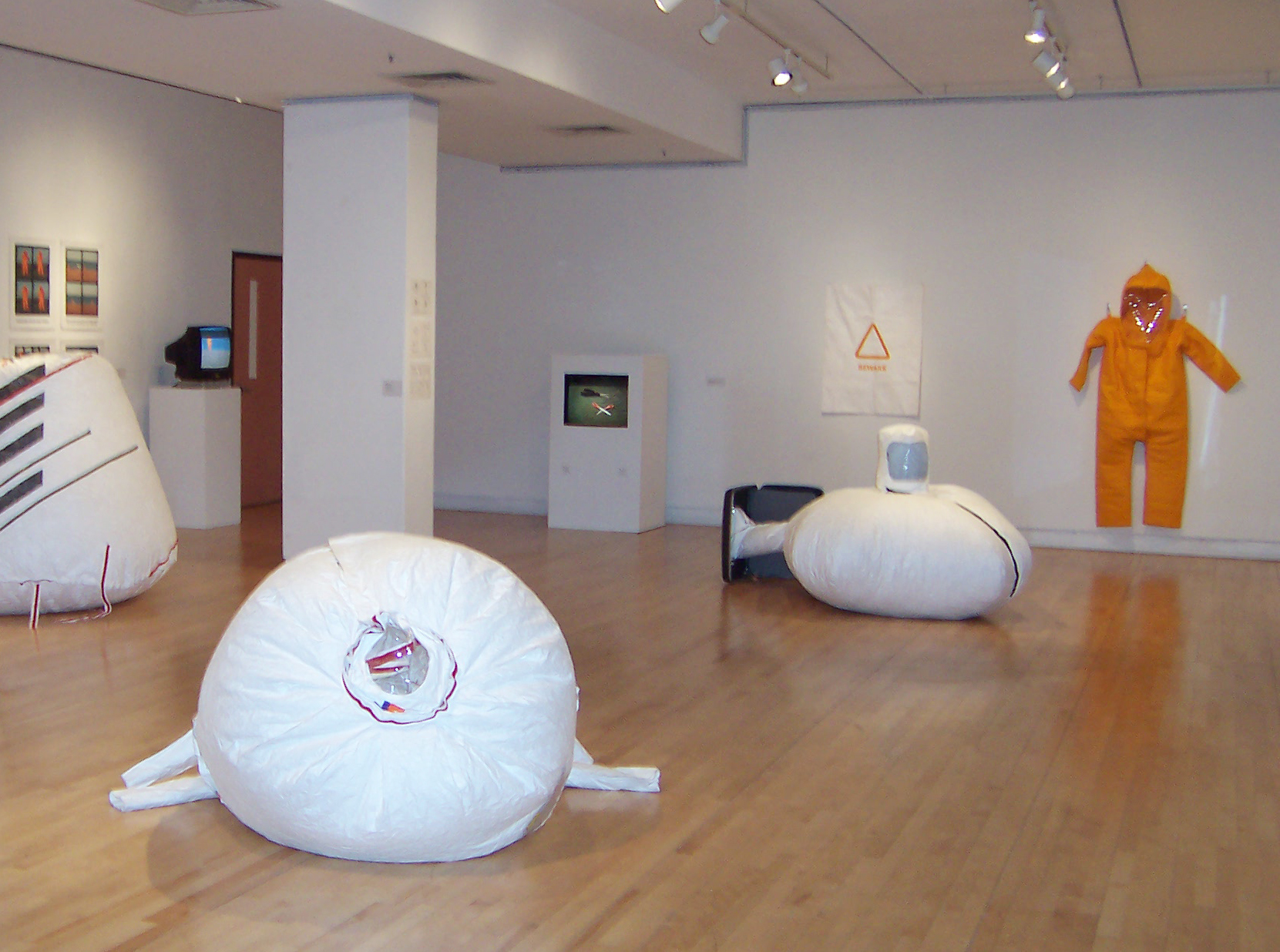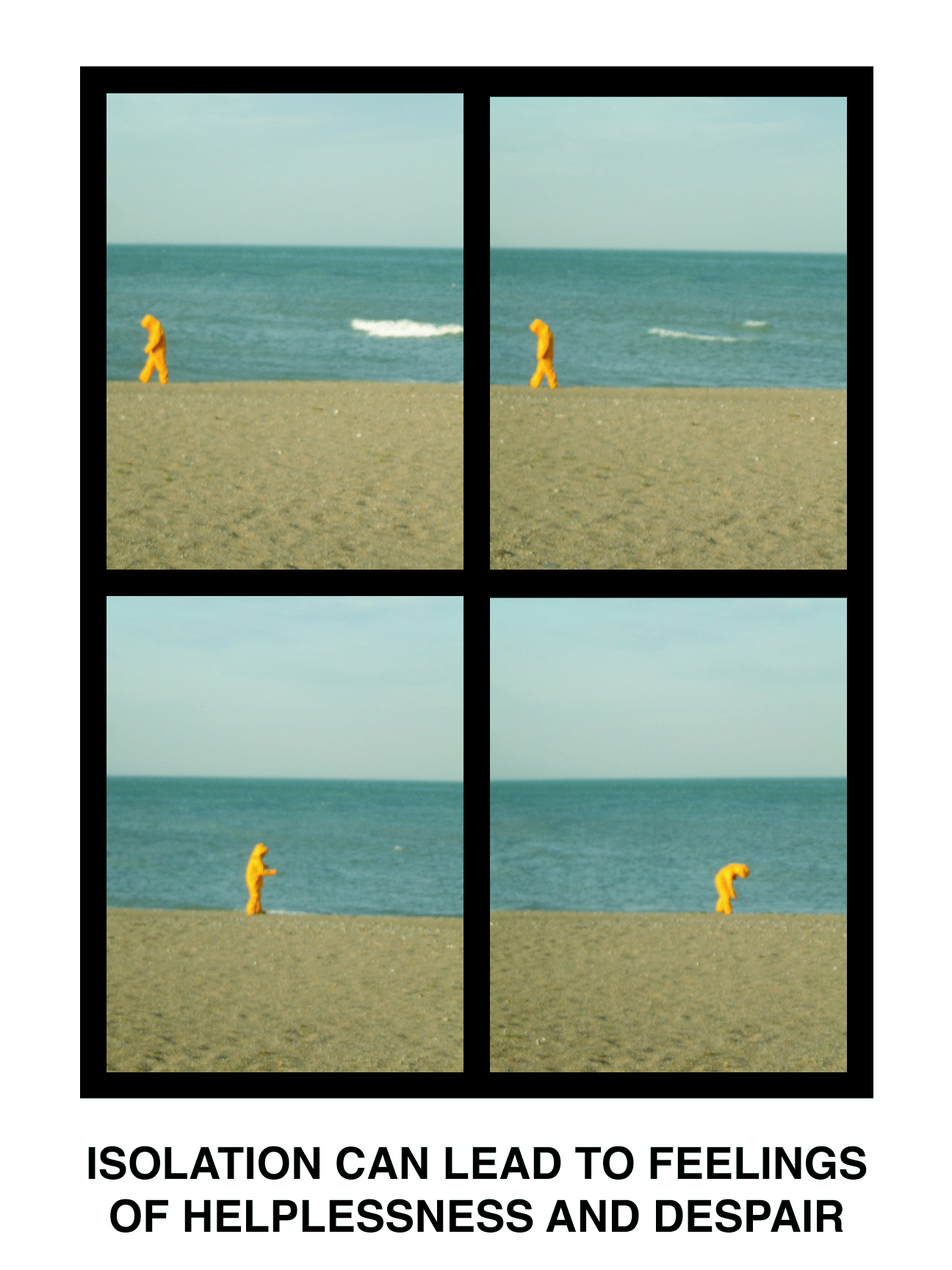Escape
Installation with digital videos, photographs, modular clothing, escape pods, felt hazmat suit, instruction posters and manuals
Catalog available
2004-2006
Escape is a contemplation on a political climate that uses an ideology of fear as a means to accelerate an aggressive defense policy. These objects were made as a reaction to the US Department of Homeland Security’s ready.gov campaign, which advocated for a complete sealing of windows and doors in case of biological warfare during the US invasion of Iraq, but reflects more generally on our fantasies as humans to endlessly escape from danger or protect ourselves through new technologies rather than the difficult work of understanding difference and working through diplomacy. While abject because of the motivations behind their production, the objects are simultaneously seductive because of their space age materials and forms. Like our national defense policies, they speak much more to our own psychology than to the threat of what lies outside.
From Lauren Viera of the Chicago Tribune:
It's an anxious era in which we live. With governmental alerts illuminating exactly how terror-threatened our daily living experience is, it's no wonder more civilians haven't resorted to bomb shelter salvation, following the 1950s rationale in the era of The Bomb.
Fact of the matter is, the very act of being forewarned--via a threat coding system of some sort--might, for some, be the root of everyday paranoia. "Escape: Attempts at Living," a unique exhibit up this month at Wicker Park's Heaven Gallery, illustrates in three dimensions a tongue-in-cheek commentary on the modern stasis between politics and paranoia, while exaggeratedly answering the urban population's unwitting need for protection.
Conceived by Huong Ngo, a second-year graduate student at the School of the Art Institute of Chicago, "Escape" uses "escape pods"--portable shelters which can in turn be deconstructed and reassembled into "protective" clothing. Ngo has been experimenting with this type of so-called social object artwork for a number of years, with hopes of prompting play, performance and conversation via politically-conscious exhibits.





